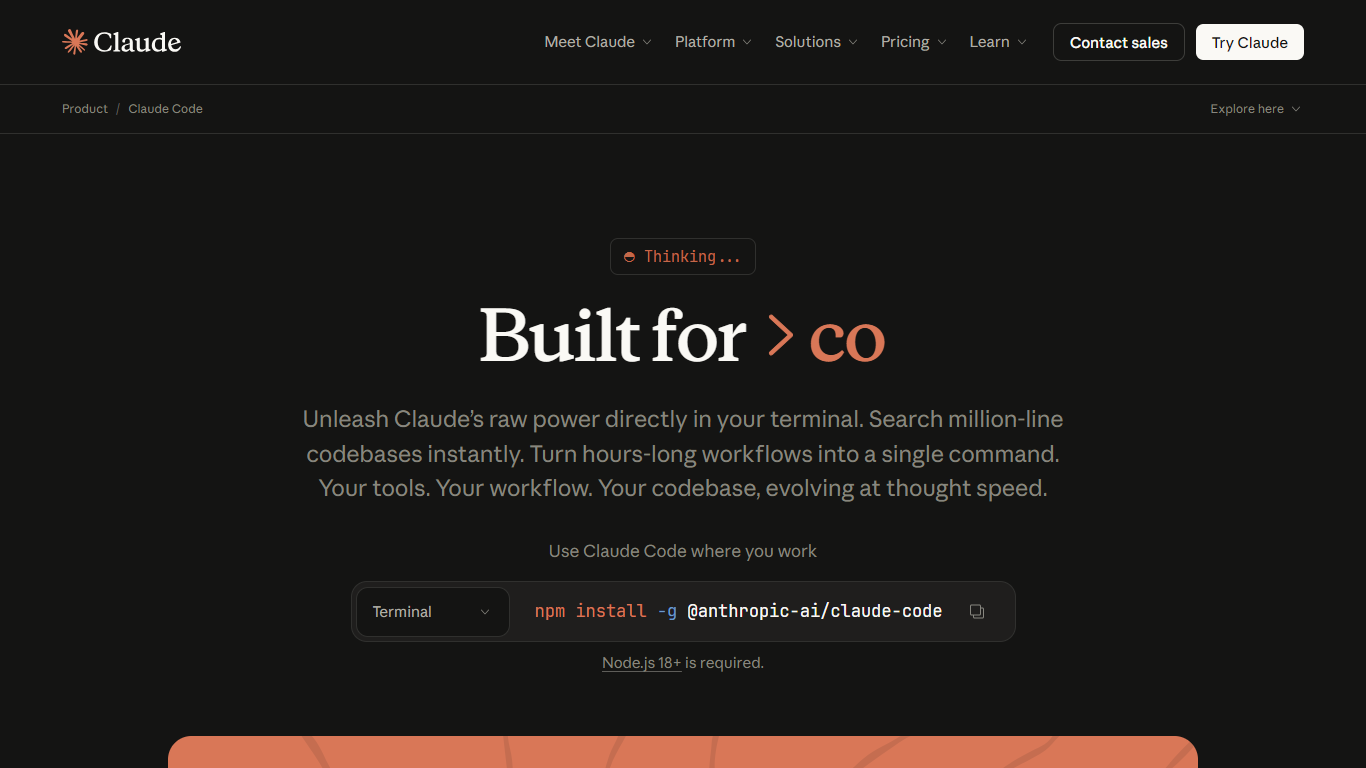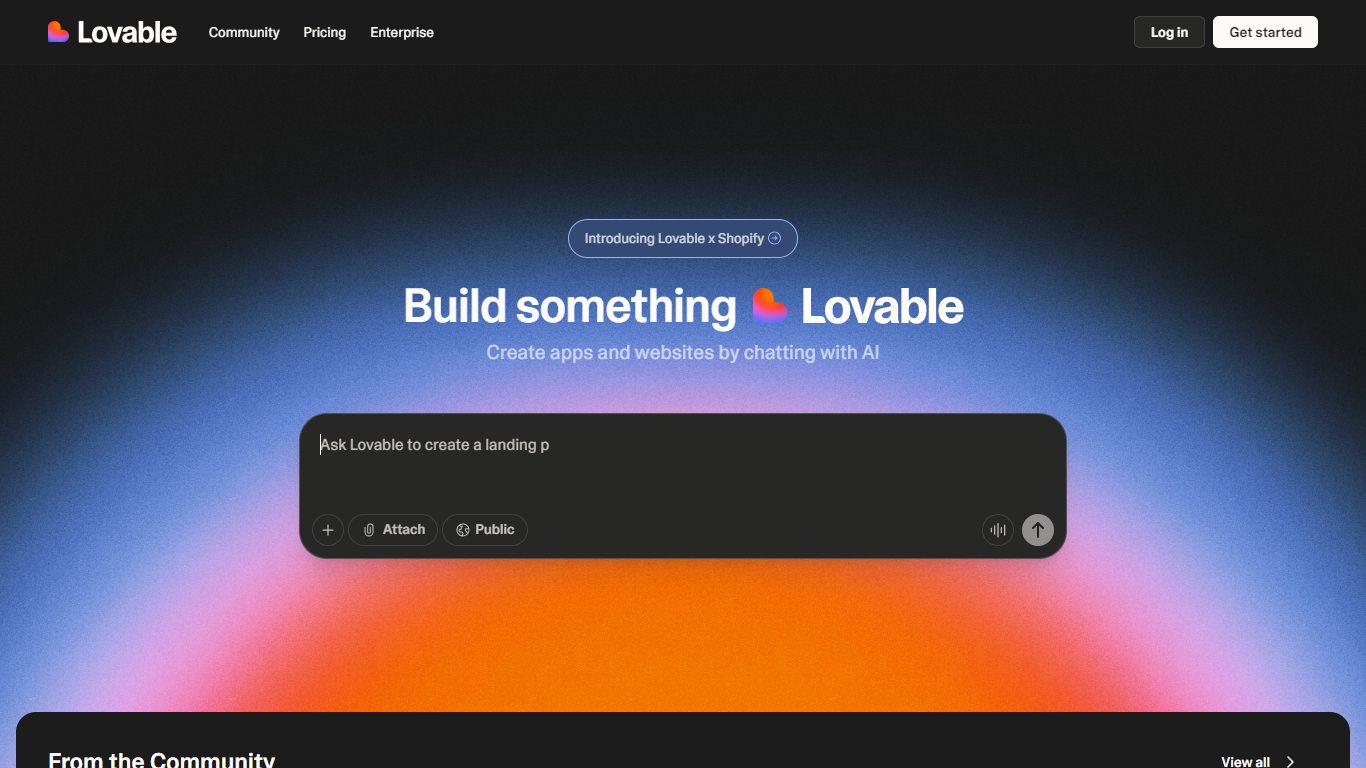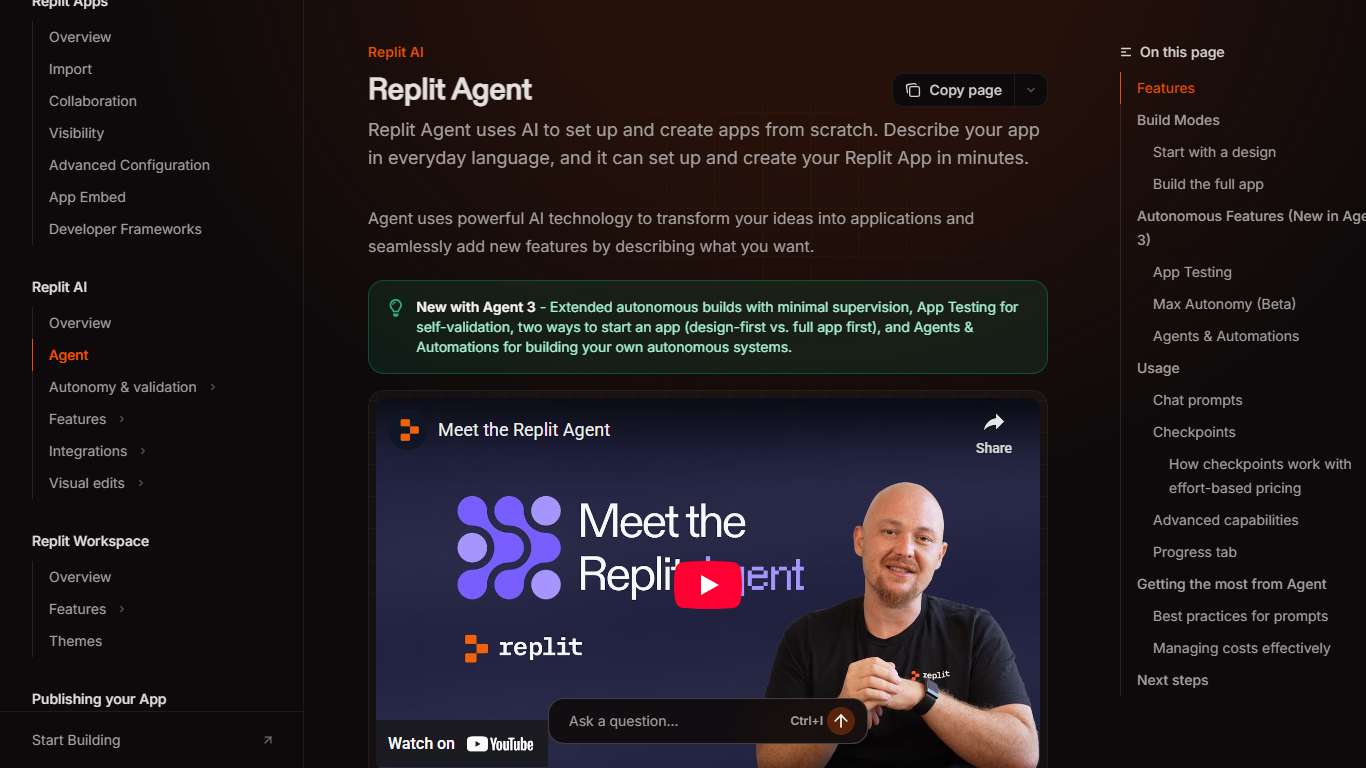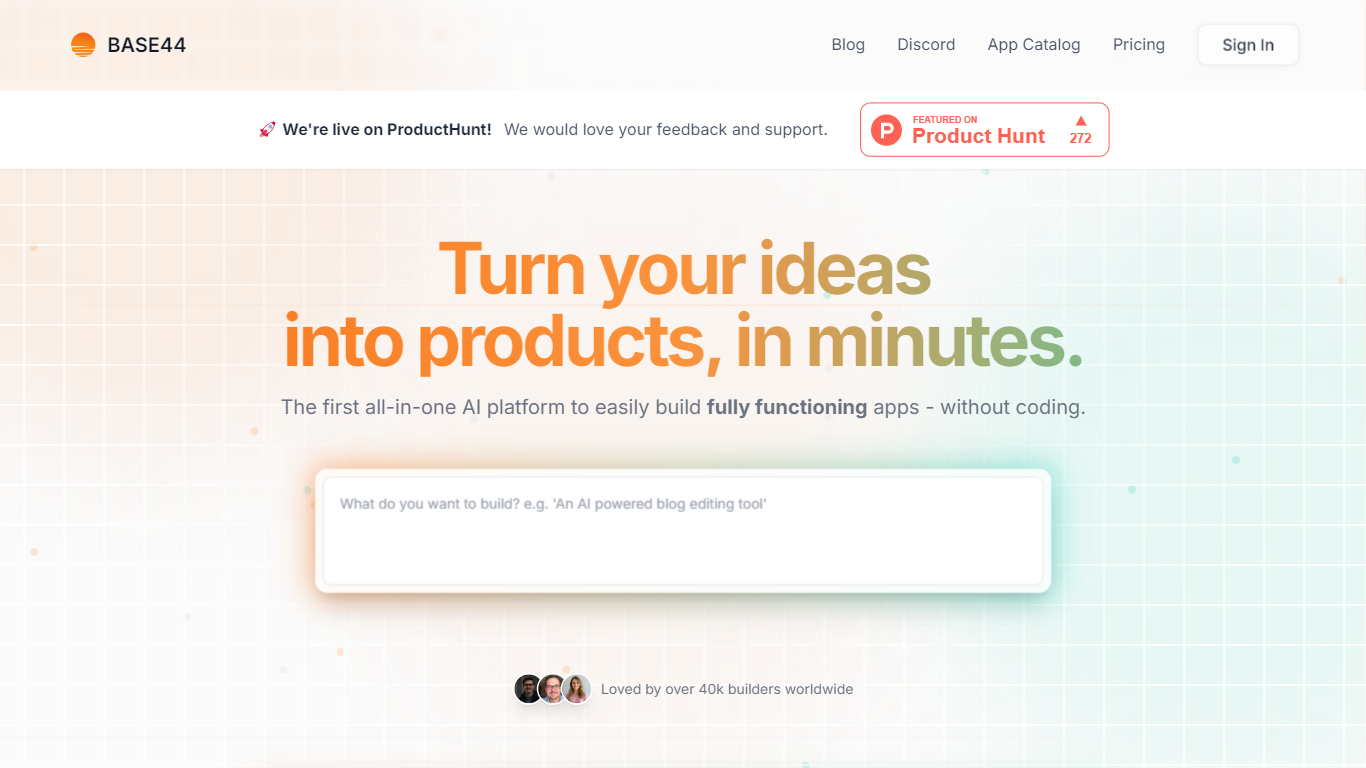14 Best Vibe Coding AI tools in 2025
Claude Code

Why choose Claude Code? and how does it work?
Claude Code is an AI-powered coding assistant designed to integrate directly into developers' terminals and IDEs, such as VS Code and JetBrains. It enables users to search and understand million-line codebases instantly and perform complex code modifications with high accuracy. The tool is optimized for code understanding and generation, leveraging the Sonnet 4.5 model, the same model used by its researchers and engineers.
Targeted primarily at developers and software engineers, Claude Code aims to streamline coding workflows by reducing hours of manual work into single commands. It supports coordinated changes across multiple files and adapts to individual coding standards and patterns, ensuring that code modifications align with existing project styles.
A key value proposition of Claude Code is its seamless integration into existing development environments, allowing users to work without context switching. It connects with common command-line tools for deployment, databases, monitoring, and version control, enhancing the existing development stack rather than replacing it.
Technically, Claude Code uses agentic search to understand entire codebases without requiring manual context selection. It operates within the terminal or IDE sidebar, providing visual diffs and using local files as context. The tool is configurable through an SDK or can be run on GitHub Actions, giving users control over its operation. It requires Node.js 18+ for installation and usage.
Claude Code emphasizes user control by never modifying files without explicit approval. It integrates with test suites and build systems to ensure code quality and reliability. The tool supports workflows such as onboarding, issue triage, and code refactoring, making it a versatile assistant for various development tasks.
Overall, Claude Code offers a powerful AI collaborator that accelerates coding tasks, improves codebase understanding, and fits naturally into developers' existing workflows and tools.
🚀 Instant codebase search: Quickly find information in million-line codebases to speed up development.
🛠️ Multi-file coordinated changes: Make complex edits across multiple files with high accuracy.
💻 Terminal and IDE integration: Work directly in your terminal or VS Code sidebar without switching contexts.
🔍 Visual diffs in IDE: See clear code change previews before applying modifications.
⚙️ Customizable and controlled: Configure workflows via SDK or GitHub Actions and approve all changes explicitly.
Windsurf

What is Windsurf?
Windsurf is an AI-powered coding assistant designed to enhance developer productivity by integrating AI directly into the coding workflow. It offers an AI-native integrated development environment (IDE) called Windsurf Editor, which combines deep understanding of codebases with real-time awareness of developer actions. This setup helps developers stay focused and maintain flow without context switching.
The tool targets individual developers, teams, and enterprises looking to accelerate software development by automating routine tasks and providing intelligent code suggestions. Windsurf supports major AI model providers and integrates with popular IDEs like JetBrains, making it accessible to a broad developer audience.
Windsurf's unique value lies in its agentic AI experience, which not only generates code but also understands project context, remembers important details, and can automatically fix linting errors. It supports connecting custom tools and services through its Model Context Protocol (MCP), enabling enhanced AI workflows tailored to specific needs.
Key differentiators include its Cascade AI engine that offers deep contextual awareness, the ability to preview and deploy apps directly within the IDE, and features like Turbo Mode that auto-execute terminal commands. The platform also provides seamless integration with tools like Figma, Slack, and Stripe, enhancing collaboration and productivity.
Technically, Windsurf is built as an AI-native IDE that runs on Mac, Windows, and Linux. It leverages multiple AI models and runs code analysis tools like pytest, pylint, and radon in parallel to identify issues quickly. The IDE supports natural language commands both inline and in the terminal, streamlining coding and refactoring tasks.
Overall, Windsurf aims to transform coding into a faster, more enjoyable process by removing boilerplate work and enabling developers to focus on creative problem-solving. Its enterprise-grade features and extensive integrations make it suitable for both individual developers and large organizations.
🧠 Deep Contextual Awareness: Understands your entire codebase to provide relevant suggestions and fixes.
⚡ Turbo Mode: Automatically runs terminal commands to keep you coding without interruptions.
🔧 Lint Fixing: Detects and corrects lint errors instantly to maintain clean code.
🔌 MCP Support: Connect custom tools and services for enhanced AI workflows with one-click setup.
👁️🗨️ Live Previews: See and edit your web app live within the IDE, then deploy without leaving Windsurf.
Link Mama

How does Link Mama work?
Link Mama is an AI-driven website builder that creates professional business sites in seconds. It focuses on making website creation fast and simple for people who do not write code. The product promises quick setup while keeping attention on converting visitors into customers.
As a reviewer for aitools.fyi, we see Link Mama aimed at small businesses and professionals who want an online presence without hiring developers. The service uses AI agents to assemble pages and offers ready-made templates that match a brand. This lowers the time and effort needed to publish a first version of a website.
What sets Link Mama apart is its combination of speed and practical tools for growth. The platform highlights AI-built sites, fast load times, and built-in SEO and analytics. That makes it useful for teams that need something that looks good and helps attract and measure visitors right away.
Link Mama also calls out strong security and performance. The site mentions bank-level encryption and optimization for fast page loads. Those are important for businesses that handle customer data and want visitors to have a smooth browsing experience.
On the technical side, Link Mama advertises AI agents that automate the build process, performance optimizations for fast load times, and built-in SEO and analytics features. The content does not list specific frameworks or backend systems, so we can only confirm these higher-level elements from the available information.
🤖 AI agents that build sites in seconds — Automates the site creation process so you get a working website fast without coding
⚡ Lightning-fast load times — Optimization work is built in to keep pages fast and reduce visitor drop-off
🎨 Modern templates that adapt to your brand — Ready-made designs that match your look and speed up launch time
🔒 Bank-level encryption and security measures — Encryption and security controls aimed at protecting user data
📈 Built-in SEO, analytics, and conversion tools — Tools to help track traffic and make the site work better for business growth
Lovable

Why choose Lovable?
Lovable is a software development platform that enables users to build apps and websites through a chat interface with AI. It targets developers, product managers, and teams who want to accelerate software creation without traditional coding workflows. The platform's unique value lies in its conversational approach, allowing users to describe their needs and receive generated code, designs, and debugging assistance in return.
Lovable offers two main interaction modes: Agent Mode and Chat Mode. Agent Mode acts autonomously to understand requests, explore codebases, debug, and implement fixes or features with minimal user intervention. Chat Mode serves as a conversational partner for planning, debugging, and strategizing development tasks, providing step-by-step guidance before executing changes.
The platform supports integration with tools like Shopify and Figma, enhancing design-to-development workflows. It also includes features such as visual editing, project analytics, custom knowledge bases, collaboration tools, and security options like Single Sign-On and data opt-out. Lovable Cloud hosts projects, enabling private and public sharing with custom domains and SEO capabilities.
Technically, Lovable leverages AI to interpret user input, access and modify codebases, inspect logs, and search the web for relevant resources in real-time. This allows it to deliver precise code generation, debugging, and feature implementation. Usage-based pricing for Agent Mode ensures users pay according to the complexity of their requests, while Chat Mode uses a fixed credit cost per message.
Lovable is suitable for building internal tools, consumer apps, B2B applications, prototypes, and websites. Its chat-driven interface lowers the barrier to software development, making it accessible for users with varying technical expertise. The platform also fosters a community with shared projects, remixes, and support channels.
🤖 Agent Mode: AI autonomously plans and implements code changes, reducing manual work and errors.
💬 Chat Mode: Interactive chat helps plan, debug, and strategize development before applying changes.
🛠️ Visual Edits: Modify UI elements directly within the platform for quick design adjustments.
🔗 Integrations: Connect with Shopify and import designs from Figma to streamline workflows.
📊 Project Analytics: Track usage and performance metrics to optimize your applications.
Replit Agent

How does Replit Agent work?
Replit Agent is an AI-powered tool designed to help users create and develop applications quickly by describing their ideas in everyday language. It targets developers, entrepreneurs, and hobbyists who want to build full-stack apps without deep coding expertise or who want to accelerate their development process. The tool transforms user prompts into working applications by generating frontend, backend, and database components, streamlining environment setup and dependency management.
A key value of Replit Agent is its flexibility in development approach. Users can start with a visual design prototype or build the full app directly, allowing them to control the pace and style of development. This makes it suitable for both visual thinkers and those who prefer comprehensive initial builds. The Agent also supports adding advanced features and integrating complex APIs, making it capable of handling sophisticated app requirements.
Replit Agent 3 introduces autonomous features that enable extended, self-supervised development with minimal human input. It can test apps automatically using real browser simulations, detect and fix issues, and provide video feedback. The Max Autonomy mode allows the Agent to work for longer periods, managing longer task lists and reducing the need for supervision.
Additionally, the tool supports building intelligent agents, chatbots, and automated workflows that interact with external services like Slack and Telegram. This expands its use cases beyond traditional app development to include automation and conversational AI.
Technically, Replit Agent operates within the Replit App workspace, accessible via a dedicated tool. It uses industry-leading AI models to generate code and manage project files. The tool supports multiple interaction modes: build mode for direct code changes, plan mode for brainstorming and architecture, and edit mode for precise code edits. It employs an effort-based pricing model where users pay based on the complexity of implemented requests, tracked through checkpoints that capture completed work.
Overall, Replit Agent offers a unique combination of AI-driven app creation, autonomous development, and flexible user control, making it a valuable assistant for a wide range of software projects.
🛠️ Create full-stack apps from simple text prompts to speed up development.
🎨 Start with a visual design prototype to see your app's look before coding.
🤖 Autonomous app testing simulates real users to find and fix issues.
⏳ Max Autonomy mode lets Agent work longer with minimal supervision.
🤝 Build intelligent chatbots and automated workflows for Slack and Telegram.
Rocket.new

Why choose Rocket.new? and how does it work?
Rocket.new is a no-code platform designed to transform app ideas into fully functional web and mobile applications rapidly. It targets entrepreneurs, startups, and developers who want to bypass traditional coding and lengthy development cycles. Users describe their app vision once, and Rocket.new generates a complete full-stack application including backend, integrations, and production-ready code.
The platform stands out by automating deep market research, feature selection, UI/UX design, SEO-friendly copywriting, and code generation in a single prompt. This approach eliminates the need for multiple prompts for each page or feature, streamlining the app creation process. Rocket.new also auto-generates backend components like database schemas, authentication, API endpoints, and cloud infrastructure, ready for payment gateways and other integrations.
Deployment is simplified with an instant launch pipeline that handles code optimization, server configuration, GitHub synchronization, and deployment to platforms like Netlify or custom domains. Mobile apps generated are ready for installation on devices, and users retain ownership of clean, high-quality code.
Rocket.new supports importing Figma designs to convert static UI/UX layouts into deployable React, HTML, or Next.js applications. Users can select screens, frameworks, languages (JavaScript or TypeScript), and design systems (Tailwind CSS or CSS) to customize their app. The platform offers a chat interface for real-time design tweaks without returning to Figma.
Templates curated by experts help users jumpstart projects and reduce token consumption. Integrations with services like Supabase, Stripe, Twilio, GitHub, and AI models from OpenAI and Google enhance app capabilities. Overall, Rocket.new accelerates app development by combining design import, AI-driven code generation, backend automation, and instant deployment in one tool.
🚀 One-prompt full app generation: Describe your app once and get a complete, production-ready app with backend and integrations.
🎨 Figma design import: Convert Figma frames into deployable React, HTML, or Next.js apps effortlessly.
🔧 Backend auto-configuration: Database schemas, authentication, API endpoints, and cloud setup done automatically.
⚡ Instant deployment: Deploy apps instantly with GitHub sync and Netlify or custom domain support.
💬 Chat interface for edits: Make real-time design and functionality changes without leaving the platform.
BASE44

What does BASE44 do?
BASE44 is an innovative platform designed to empower users to build custom software applications in a matter of minutes, utilizing natural language processing. This tool eliminates the need for coding, making it accessible to a wide range of users, from entrepreneurs to small business owners, who may lack technical expertise. The unique value proposition of BASE44 lies in its ability to transform ideas into fully functioning applications without the complexities associated with traditional software development. By leveraging artificial intelligence, BASE44 streamlines the app-building process, allowing users to focus on their core business objectives rather than getting bogged down by technical details.
The platform is particularly beneficial for those looking to create tailored solutions that fit specific business needs without incurring ongoing subscription costs associated with traditional SaaS products. BASE44 stands out in the market by offering an all-in-one solution that integrates various functionalities, such as back-office tools, personal productivity applications, and customer portals, all within a single platform. This comprehensive approach not only saves time and resources but also enhances productivity by automating internal processes and streamlining workflows.
In summary, BASE44 is a game-changer for individuals and organizations seeking to develop software quickly and efficiently. Its user-friendly interface, combined with powerful AI capabilities, positions it as a leading choice for those looking to innovate and adapt in a fast-paced digital landscape.
AI-Powered App Builder: Utilizes natural language processing to allow users to create applications without any coding knowledge, significantly reducing development time.
Custom Solution Development: Enables users to build tailored applications that meet specific business needs, eliminating reliance on expensive SaaS solutions.
Backoffice Automation Tools: Provides functionalities to automate internal processes, enhancing team efficiency and productivity.
Personal Productivity Applications: Allows users to create custom tools for managing tasks, notes, and schedules, improving personal organization.
Customer Portal Development: Facilitates the creation of secure and user-friendly interfaces for clients, ensuring easy access to information and services.
CodePal
What does CodePal do?
The ultimate coding companion - CodePal is a robust set of AI-driven tools like text-to-code generation, code review, code simplification, bug detection, unit test writing and more.
Tempo
Why use Tempo? and how does it work?
Tempo is an innovative platform designed to enhance the web development process by integrating AI-powered tools that allow designers and developers to collaborate seamlessly. The core functionality of Tempo revolves around enabling users to build React applications significantly faster, with a focus on ease of use and efficiency. By providing a drag-and-drop editor, Tempo allows users to edit React code visually, making it feel more like a design tool rather than a traditional coding environment. This unique approach helps bridge the gap between design and development, allowing for a more intuitive workflow.
The target audience for Tempo includes web developers, UI/UX designers, and teams looking to streamline their development processes. Whether you are a seasoned developer or a beginner, Tempo caters to a wide range of users by simplifying complex coding tasks and providing tools that enhance productivity. The platform is particularly beneficial for those working with React, as it offers tailored solutions that address the specific needs of this framework.
Tempo's unique value proposition lies in its ability to combine advanced AI capabilities with user-friendly design tools. This allows users to generate and edit code quickly, reducing the time spent on manual coding tasks. Additionally, Tempo offers features such as importing components from Storybook and generating custom libraries, which further enhance its appeal to developers looking to maintain and build design systems efficiently. The platform's focus on collaboration and ease of use sets it apart from traditional coding environments.
Key differentiators of Tempo include its visual editing capabilities, the ability to work with existing codebases, and the integration of AI-driven features that assist in the development process. Users can edit code locally using their preferred editors, push changes to GitHub, and maintain control over their hosting infrastructure. This flexibility allows teams to work in a way that best suits their workflow, making Tempo a versatile tool for modern web development.
In terms of technical implementation, Tempo leverages AI to generate full-stack applications based on text or image prompts. This includes creating architecture and diagrams, which simplifies the initial stages of app development. The platform also emphasizes quality assurance, with human engineers and designers reviewing the generated code to ensure it meets high standards. Overall, Tempo represents a significant advancement in the way web applications are developed, making it an essential tool for anyone involved in the React ecosystem.
Visual Code Editing: Tempo allows users to edit React code using a drag-and-drop interface, making coding feel more like designing. This helps users create applications faster and with less frustration.
Component Importing: Users can import components from Storybook or generate custom libraries quickly. This feature saves time and helps maintain consistency in design systems.
Local Code Editing: Tempo enables users to open and edit code in their favorite local editors like VSCode. This flexibility allows developers to use their preferred tools while working on projects.
AI-Powered Code Generation: The platform uses AI to generate full-stack applications from text or image prompts, streamlining the development process and reducing manual coding efforts.
Error Fixing: Tempo offers free error fixes that do not count towards the monthly prompt limit. This ensures users can maintain their projects without worrying about additional costs for troubleshooting.
v0 by Vercel
What is v0 by Vercel?
v0 by Vercel is an AI-powered assistant designed to help users create, iterate, and scale full-stack web applications through natural language prompts. It serves as a collaborative partner that can generate UI components, write and execute code in JavaScript and Python, and build diagrams to explain programming concepts.
This tool is aimed at a broad audience including product managers, marketing teams, founders, and engineers, enabling them to prototype, build landing pages, ship MVPs, and accelerate development without needing coding expertise.
v0 stands out by allowing users to start building with a single prompt, eliminating the need for manual coding. It supports multiple frontend frameworks such as React, Vue, and Svelte, and can generate pixel-perfect applications from uploaded designs or Figma files.
The platform also offers intelligent agent capabilities including real-time web search, site inspection, automatic error fixing, and integration with external tools via the Vercel Marketplace. Technically, v0 operates as a generative chat interface with deep knowledge of modern web technologies. It can output advanced Blocks of code that users can preview, copy, or install directly into projects.
The system intelligently selects the appropriate AI model for each query, removing complexity for users. It integrates with Git for bi-directional syncing and deploys applications instantly on Vercel's platform without configuration.
Security is addressed through adherence to secure coding practices and Vercel's enterprise-grade infrastructure, including SOC 2 Type 2 compliance. User data from enterprise customers is not used for training, and there are options to opt out of data usage for model training. v0 requires an internet connection to function and does not currently support offline use.
Collaboration is supported through team plans that allow multiple users to share projects, iterate designs, and deploy from a shared workspace. Pricing includes free and premium plans with usage-based credits and team options. Overall, v0 by Vercel offers a powerful, accessible way to build web applications by combining AI assistance with modern development workflows.
📝 Natural language prompts to create web apps without coding, making development accessible to all users.
⚛️ Supports React, Vue, Svelte, and HTML/CSS, enabling versatile frontend development.
🔍 Real-time web search and site inspection to gather current information and analyze websites.
🛠️ Automatic error detection and fixing to streamline debugging and improve code quality.
🤝 Team collaboration features allowing shared projects and synchronized development workflows.
GitHub Copilot
Why use GitHub Copilot? and how does it work?
GitHub Copilot is an AI-powered coding assistant that integrates directly into popular code editors like Visual Studio Code, Visual Studio, JetBrains IDEs, and Neovim. It suggests whole lines or entire functions as you type, helping developers write code faster and with fewer errors. Beyond simple code completion, Copilot offers chat-based assistance, code reviews, and multi-file editing capabilities to streamline the development process.
Designed for individual developers, teams, and enterprises, Copilot adapts to your coding style and project context by indexing your codebase and related documentation. It supports a wide range of programming languages, with particularly strong performance in well-represented languages like JavaScript and Python. The tool also includes features like Copilot Chat, which allows switching between AI models for quick or deep coding help, and Agent mode, which can autonomously analyze, edit, test, and validate code across multiple files.
GitHub Copilot emphasizes responsible AI use by generating suggestions probabilistically rather than copying code verbatim. It includes filters to reduce the risk of suggesting copyrighted code and provides transparency when suggestions closely match public repositories. Users maintain control over Copilot’s activity and can configure it per file type or project.
The platform offers multiple subscription tiers, including a free plan with limited completions and chat requests, a Pro plan with unlimited usage and access to more AI models, and enterprise options that add license management, policy controls, and deeper integration with organizational codebases. Copilot also supports privacy and compliance standards, with clear data handling policies and options for data retention.
Overall, GitHub Copilot enhances developer productivity by automating routine coding tasks, offering contextual help, and enabling smarter collaboration, making it a valuable tool for anyone looking to accelerate software development without sacrificing code quality.
💡 Contextual code suggestions: Offers whole lines or functions based on your current code to speed up writing.
🤖 Copilot Chat: Provides interactive coding help and explanations within supported IDEs.
🛠️ Agent mode: Automates code edits, testing, and validation across multiple files to handle complex changes.
📚 Copilot Spaces: Organizes your code, docs, and notes to deliver tailored AI assistance for your team or project.
🔍 Multi-model support: Switch between AI models like GPT-5, Claude, and Gemini for fast or deep coding tasks.
Codex
Why use Codex?
OpenAI Codex is an AI system that translates natural language into code, now generally available with new features for developers and teams. It powers GitHub Copilot and supports over a dozen programming languages including Python, JavaScript, Go, and more. Codex can interpret simple English commands and execute them, enabling natural language interfaces to software and APIs.
The latest version, GPT-5-Codex, offers faster and more accurate coding assistance, accessible via an API and a new SDK that integrates the Codex agent into custom workflows and apps. Codex also features a Slack integration, allowing teams to delegate coding tasks and get answers directly within Slack channels.
Administrators benefit from enhanced tools like environment controls, usage monitoring, and analytics dashboards to manage Codex usage at scale. Codex is used globally by startups and enterprises alike to speed up code reviews, automate code cleanup, and reduce manual coding effort.
Technically, Codex has a larger memory for Python code (14KB) than its predecessor GPT-3, allowing it to consider more context when generating code. It runs as a cloud-based agent and also offers a local CLI tool for coding assistance in terminal environments.
OpenAI continues to improve Codex’s safety and reliability, scaling access carefully while supporting developers with documentation and community resources. Codex lowers barriers to programming by automating repetitive tasks and helping users map problems to existing code efficiently.
🧑💻 Multi-language support: Works with Python, JavaScript, Go, and more to assist diverse coding needs.
⚙️ Codex SDK: Embed Codex’s coding agent into your own apps and workflows for custom automation.
💬 Slack integration: Assign coding tasks and get answers directly within Slack channels.
📊 Admin tools: Manage usage with environment controls and analytics dashboards for teams.
🚀 Code review automation: Speeds up pull request reviews and detects issues early to improve code quality.
Qoder
Why use Qoder? and how does it work?
Qoder is an agentic coding platform built to help people create real software. From our review, it positions itself as a tool that adds agency to the coding process. That means the platform uses agent-driven workflows to assist with coding tasks, so teams can focus on higher-level decisions.
The platform is aimed at developers, engineering teams, and makers who build real software projects. It is not presented as a toy or a quick prototyping script. Qoder speaks to people who want tools that help them think through design and implementation choices.
Qoder’s core promise is short and direct: think deeper, build better. In practice that means the product aims to push users to examine code choices and improve outcomes through agentic assistance. The emphasis is on thoughtful development rather than quick fixes.
What sets Qoder apart is its explicit focus on agentic coding for production work. The site frames the product around real software needs and improving developer thinking. That positioning is the key differentiator in the market: it puts agents inside the coding workflow with an eye toward real, usable software.
Technical details are limited on the site. The available content only states Qoder is an agentic coding platform for real software, and uses the phrase think deeper, build better as its guiding idea. There are no platform specs, integrations, or architecture notes in the provided content.
Agentic coding support 🧠 - Uses agent-driven workflows to assist with coding tasks, helping developers focus on design and decisions.
Built for real software 🏗️ - Positioned for real projects rather than quick prototypes, aiming to support production-oriented work.
Encourages deeper thinking 💡 - Promotes analysis of design and implementation choices to improve code outcomes.
Build better outcomes 🔧 - Focuses on raising the quality of the final software, not just speeding up task completion.
Platform-oriented approach 🖥️ - Presents itself as a coding platform that brings agents into the developer workflow.
Cursor AI
Why use Cursor AI? and how does it work?
Cursor.sh is an AI-first code editor designed to boost developer productivity by combining human creativity with AI precision. It acts as a human-AI programmer, transforming ideas into code with a custom autocomplete model that predicts your next actions quickly and accurately. Cursor understands your entire codebase, regardless of size or complexity, enabling it to provide targeted edits, multi-line suggestions, and smart rewrites that help you write code faster and with fewer errors.
The editor supports a range of top AI models from providers like OpenAI, Anthropic, Gemini, and xAI, giving users flexibility to choose the best fit for their projects. Cursor integrates deeply into your workflow, allowing you to start coding tasks from platforms like Slack or your issue tracker and finish them in the IDE. It also features an autonomy slider, letting you control how much independence the AI has—from simple autocomplete to fully agentic coding.
Cursor's agent tools can run in any terminal or script, and its Bugbot feature reviews your pull requests to identify issues and fix them with one click. The editor is highly customizable, supporting one-click import of VS Code extensions, themes, and keybindings, as well as connecting external tools and data sources through MCP servers. Teams can manage reusable prompts and scoped instructions to tailor AI behavior to their needs.
Trusted by millions of developers and over half of the Fortune 500, Cursor is built for secure, scalable software development. Its recent improvements include a new Tab model that reduces unnecessary suggestions while increasing acceptance rates, faster training with custom kernels, and enhanced agent terminal tools. Cursor continues to evolve with a focus on making programming more enjoyable and efficient, moving away from traditional trial-and-error coding to a more interactive, idea-driven process.
Whether you're an individual developer or part of a large team, Cursor offers a flexible, powerful environment that adapts to your workflow and coding style. Its privacy options ensure your code stays secure, and its integration capabilities mean it fits naturally into your existing toolset. Cursor is not just a code editor; it's a partner that helps you build better software faster.
🤖 Agent Coding: Delegate coding tasks to AI agents so you can focus on higher-level work.
🔍 Deep Codebase Understanding: Cursor learns your entire codebase to provide accurate suggestions and edits.
⚡ Custom Autocomplete: Our Tab model predicts your next actions with speed and precision, reducing unnecessary suggestions.
🐞 Bugbot Review: Automatically detects issues in pull requests and offers one-click fixes.
🔧 Easy Migration: Import your VS Code extensions, themes, and keybindings with one click to start coding immediately.